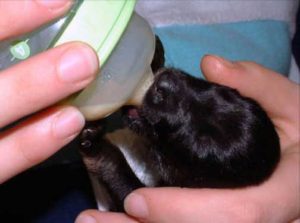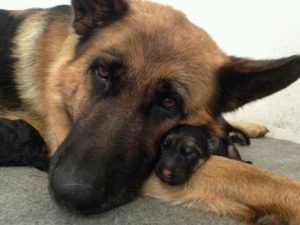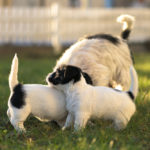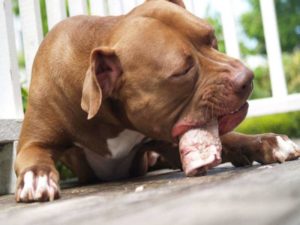Introduction
If you’re inexperienced with newborn puppies, you might think there’s nothing for you to do there when the mother is present and well. On one hand that is true – that’s the way the things go in nature.
On the other hand – not all of the pups survive their first weeks in natural environment. You’d like to keep the surviving chances of those babies as high as possible? Than read what are the simple things you can do to help.
Average Size and Weight Babies
Normally, the average size of German Shepherds litter is 5-10 puppies that are born in period between 6-18 hours. The newborns are blind, deaf and have no teeth. They weight about 0.08 to 1.3 pounds at birth and have no other abilities but finding their mothers nipple and sucking.
If the Puppy Does Not Breathe on His Own
When the puppy is born you have to check his vitals as soon as possible. You need to make sure they are breathing properly. Have a baby syringe close to you and at sign of labored breath or congestion try to suck out any liquid that can be inside the pup’s throat and nasal passages. If this doesn’t help and puppy seems sluggish, you need to make something seemingly harsh to stimulate its breathing.
You can swing it in strong downward motion (be careful and hold its head and shoulders firmly) or rub him vigorously with towel. You can also try to put a drop of strong alcohol to his tongue or dip his body into cold and hot water, giving pup a contrast shower. Sounds like a torture, but these methods can help you reanimate a weak puppy.
Keeping Newborn Puppies
Now, when you made sure the baby is fine – let it suck on his mother breast straight away – this will help to stimulate new contractions. When they start – take away the puppies that already born, so the mother doesn’t step on them while being in pain. Place them in the warm box, better with the heating pad in it, until the new pup is born. Then immediately let the mother resume nursing.
When the labor is finished you should place the new mother and pups in prepared in advance whelping box. Basically is should be a bed, large enough for the puppies and the mother to fit in with a bit of space for free movement.
Proper Care
The under layer has to be replaced every day, so you can make is from newspapers or special substance. Cover it with warm blanket, but make sure its tight enough and puppies will not get entangled in layers of cloth. The mother takes as much care as she can for her kids poo and pee, but still make sure the bed is changed every day and pups are laying in dry place.
Temperature Control
Sometimes the heat lamp will be a necessity. If you’re not sure if your puppies are hot or cold – look how they sleep. If they laying in pile, trying to hide their noses – they are chilled, if they are not even touching each other – they might be overheating.
Make sure they do not dehydrate – pinch the skin on their necks. It should come back in its place immediately, if this doesn’t happen – contact your vet.
Feeding
Get a scale and keep track of puppies’ growth – they should be consistently gaining weight if they are eating properly. Healthy puppy eats every two hours in first week and after feeding has a good round belly. Now, if everything went fine – take care of the mother and she will take good care of her pups.













